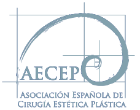Facelift
Face and neck lift · Rhytidectomy
A face and neck lift is a surgical operation consisting of remodelling the facial tissues to counteract the effects produced by the passage of time. To achieve optimum aesthetic results, the surgeon works on both the skin and the deep tissues.
This operation is recommended for all men and women who have a loss of cutaneous elasticity, flaccidity, and wrinkles in specific areas of the face.
Depending on the type of operation required, face lifts are suitable for a very wide spectrum of patients, from those aged 35/40 who want to recover their skin tone (called a weekend face lift) toolder people who want a complete face lift because ageing has affected the whole face.
What is a face lift or rhytidectomy?
Cosmetic or rhytidectomy surgery is an operation consisting of remodelling the facial tissues, eliminating excess skin and muscles, and so reducing the effects of natural ageing. In order to achieve the longest lasting and optimum aesthetic results, the surgeon works on the skin and the deep tissues called the superficial musculoaponeurotic system (SMAS).
Traditionally the face has been divided into three areas: the lower, middle and upper areas (the neck, the face and ends of the eyebrows, plus the brow). Anti-ageing surgical procedures can be carried out on each areaseparately or together.
Who needs it?
This operation is recommended for all men and women who have a loss of cutaneous elasticity, flaccidity, and wrinkles in specific areas of the face.
Depending on the type of operation required, face lifts are suitable for a very wide spectrum of patients, from those aged 35/40 who want to recover their skin tone (called a weekend face lift) toolder people who want a complete face lift because ageing has affected all of the three areas of the face referred to above. As a general rule these people also have skin that has been aged by sunlight, is dehydrated and stained, and has a thick epidermis that requires additional non-surgical procedures.
Anaesthesia
A face and neck lift may be carried out under local anaesthetic. However the most recommended procedure is local anaesthetic supported by sedation, or general anaesthetic.
Technique
There are different types of lifts in different areas depending on each patient’s needs:
Neck: Incisions are made and excess skin is removed from behind the ears.
Cheeks: The skin over the cheek bones is tightened with the scars being located in front of the outer ear (in front of or behind the ear tragus).
The ends of the eyebrows: Incisions are made in the temporal region.
The brow:An incision in the shape of a tiara is called a coronal lift. This is almost never used now as the effects produced are similar to those obtained with botulinum toxin. Nowadays, the area to be operated on is marked with a felt tip pen. When the incisions are made, the skin is firstly peeled back and the superficial musculoaponeurotic system (SMAS) is tightened, and then the skin is replaced. Once this step has been carried out the skin is cut back, but care must be taken to eliminate only the excess skin to prevent it from becoming excessively taut, and to ensure that scarring is minimal and imperceptible.
A drain is then inserted and bandages applied.
Duration of the operation
Depending on the extent of the operation it will take around three or four hours.
Recuperation
After the operation, the surgeon decides whether, once recovered from the anaesthesia, the patient can go home or must stay in hospital.
The drain is left in for 24 hours and the bandages are left on for 48/72 hours.
Stitches are removed at 8/10 days.
Recuperation time. Patients recover from partial face lifts very quickly. After 48/72 hours their appearance is almost back to normal.
However, patients who undergo an extensive face lift will have a swollen face for some 10 days and haematoma or bruising can be seen for two weeks.
For the results to last for as long as possible, it is essential that the skin is looked after and hydrated, is only exposed to a moderate amount of sun and sun protection is always used.
What are the risks?
- Haematoma: This is the abnormal accumulation of blood in the area operated on. To avoid it rigorous coagulation must be carried out. If the haematoma is very large, the wound can be reopened to drain it.
- Infection: The risk of infection nowadays is very low, as it is prevented by using antibiotics. Should it occur, and depending on its severity, it can affect the final results of the operation.
- Hypertrophic and keloid scars:The scar can be of poor quality, extremely thick and slow to turn white (hypertrophic). This depends on the individual’s inherited characteristics and their age.
- Keloid scars: this is a condition where there is excessive growth of the scar. It is uncommon amongst people with white skin. However it is not uncommon amongst people with black skin.
- Hyperpigmentation of scars: This can occur in individual patients through inherited characteristics, premature exposure to sun, or by taking certain medication. Its treatment consists of the application of creams, peeling or laser depigmentation.
- Hypopigmentation of scars:Loss of colour in the scars with a whitening effect.
- Facial paralysis: This can be temporary or permanent, and is usually the result of poor surgery. Statistically it occurs in less than 1% of patients.
- Necrosis and alopecia due to poor blood circulation: This is normally caused by smoking.
How long does the treatment last?
Depending on the type of surgery and the patient’s skin care regime the results of surgery can last for between five and ten years.
Advice
Smoking alters microcirculation, harming the quality of scars and even the integrity of the skin itself. It is therefore strongly advisable to cut down on smoking if intending to undergo this operation.
It is helpful to take vitamins A, C and E.
As in all surgical operations the consumption of aspirin and aspirin derivatives must be avoided, as they increase bleeding and therefore the incidence of haemotomas.
Frequently asked questions regarding neck and face lifts.
Is it possible to have a neck and face lift without scars?
Although hidden, there are always scars.
Do you lose facial expression?
No, you do not lose facial expression. With a well performed face lift the work of the surgeon cannot be seen, no matter how extensive the results of the operation.
Are there non-surgical techniques that provide the same results?
No, if there were alternative and effective techniques surgical solutions would no longer be used.









